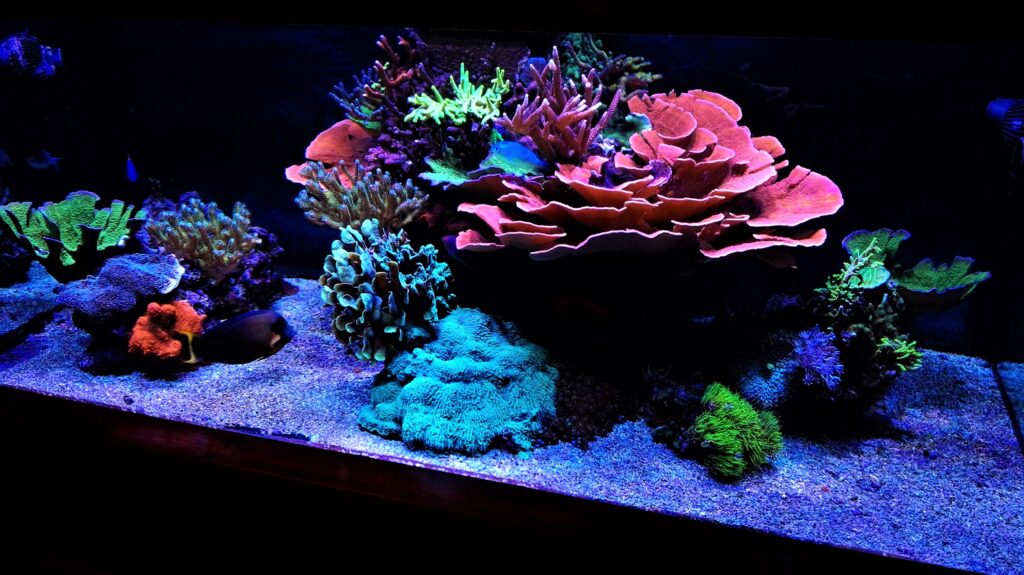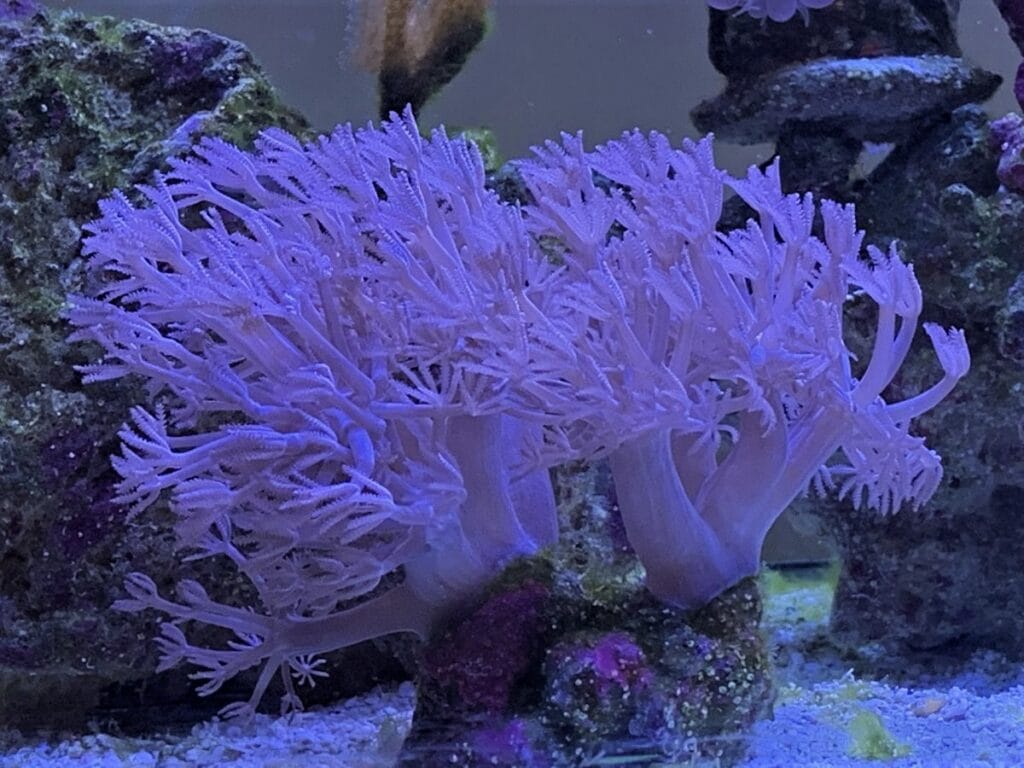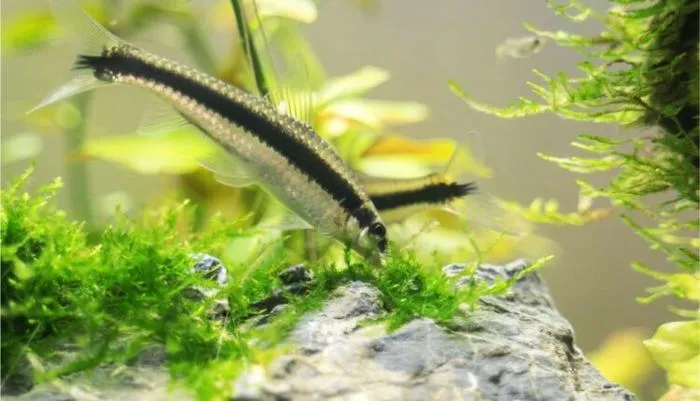We all know that someone owns an amazing-looking aquarium and has healthy fish, rocks, and different saltwater aquarium coral types inside. Looking at these amazing aquariums sure does intrigue us to create our little aquarium setup. Even if you’re not one of these people and already own an aquarium. This guide will run through all the major and needed information for all aquatic lovers out there.
If you started with a basic fish-rock combination aquarium and now want to move on to turning it into a reef. We will send all the information we have to avoid all the beginner mistakes by learning about marine aquarium coral species.
There are tons of coral types to choose from. All of them have different characteristics. It can be a little overwhelming to choose which coral suits best in your tank. But worry not; we will go through different corals such as the Hard corals (SPS & LPS) and Soft corals.
Now that you know the basic overview of this guide let us first work through setting up a new Saltwater Coral reef Aquarium.
How to Start a Saltwater Coral Tank
With so many different species of fish and corals, it gets hard to work out all the factors when we decide to set up a tank. There should be a fair balance of everything to ensure the health and happiness of your animals and plants inside. If you’re done with setting up a saltwater aquarium, you can skip this portion. Before, we check out saltwater aquarium coral types. Let’s go through the steps needed to start your coral tank.

Pre-planning:
Almost every aspect should be close to perfect; even minor deficiencies can cause problems for your aquatic family. It may seem a bit scary having to look after everything and caring for your Aquarium. But it isn’t when you have pre-planned everything beforehand.
The first factor that you should pre-plan is what you want to keep in your Aquarium? Any kind of fish, coral, or rock has different requirements. Therefore, your mind should set upon things you want to keep. This article on saltwater aquarium coral species focuses on coral and the fish that can live alongside them.
So, for a coral reef tank, you should assess all the relevant items and factors.
The tank size is another factor that should be decided. Bigger tank sizes are far better as they have more space for expansion and to home different species. Although if you are on a tight budget, then smaller tanks are not harmful by any means—the room where you want to place your tank matters as well. There should be enough space so that you can properly move around and clean the tank without any problem. Your room should have a stable temperature (not too hot or too cold). The tank should put in a place where the sun doesn’t shine at all times during the day.
Related Also: HOW MANY FISH PER GALLON?
Equipment and Other Factors:
After the planning is done, you need to have all of the needed equipment to help maintain and initiating your Aquarium. This includes; Pumps, Powerhead, Filters, Light, Heating units, Saltwater, buckets, Tubes, and an aquarium fishnet.
To start a coral tank, it’s a no-brainer that you need saltwater to set their survival grounds. Saltwater can be produced at home or bought from an aquarium shop or us. It’s easier and safer to buy from a well-known shop if you’re a beginner. Keep in mind that water is hard and heavy to carry.
- Water chemistry is essential to set the basis for your tank. Buying an aquarium test kit or getting the saltwater tested from the local aquarium shop is highly recommended! The water testing should be done weekly to keep your aquatic friends healthy.
- A good filtration system needs to be installed to assist in the cleanliness of your Coral Aquarium.
- The lighting is utterly essential, and a lot of newbies overlook this. The corals reside in the shallow parts because they need sunlight. This is because corals use sunlight to derive energy to keep them healthy and growing. Therefore, it is of utmost importance to provide them with the required lighting. You can find a lot of guides and different lights to get for your saltwater coral aquarium.
- Lastly, the flow of water is needed inside the aquarium tank. Many corals and the fish that reside in coral biomes are used to a specific water flow. Usually, water is not suitable for these types of tanks. To control the water flow, you can buy a powerhead. This will make life easier for you and your marine animals.
By keeping these factors in check, you can properly learn how to care for coral in a saltwater tank. Now we have gone through the basics of how to start a saltwater coral tank. We will now look at all the saltwater aquarium coral types you can keep in it.
Related Also: Betta Sorority Tank Care Maintenance
Types of Saltwater Aquarium Coral
There are tons of different Saltwater aquarium coral types. The physical features of coral make it seem like they are marine plants but, that’s not true. This might come as a surprise for you because corals are classified as animals. Corals are marine invertebrates, which mean they are animals that lack any backbone structure. They are commonly found in shallow parts of the ocean.
Corals live in communities and are closely situated to each other. The ‘Great Barrier Reef‘ is one of the most significant coral compact communities in the world. There is no doubt that these reefs are beautiful to look at.
The varying vibrant colors and their exotic shapes can attract aquarium keepers to adopt them in their tank. Corals are harder to maintain and look after. Therefore, it requires good sourced knowledge and skill to handle coral needs adequately.
We ran you through the importance of setting up the perfectly conditioned Aquarium before placing any corals or fish inside. This shouldn’t be overlooked because it is of great magnitude.
Now we will tell you the two major saltwater aquarium coral types; Hard Corals and Soft Corals.
Hard Corals:
Just as the name suggests, these corals are hard in form. This is basically because they have calcium skeletons. As mentioned before, corals live in communities. The colonies they live in have a calcium structure as well, and all the individual hard corals are connected to it. Hard corals hold down as the backbone of the whole coral reef. Even their deceased skeletons turn into a base for more corals.
Hard corals usually have six ring-shaped tentacles on their polyps. There are further two classifications of hard corals; LPS and SPS.
- The LPS stands for “Large Polyp Stony.” These are fewer than SPS Corals. The polyps on an LPS coral are larger and have smaller skeletal figures. They use their lengthy polyps to hold onto food and consume it. The LPS corals are most commonly found in deeper waters and a not-so-brightly lit zone. That is why they require different kinds of water flow, temperature, and lighting setup in a saltwater coral tank.
- SPS means “Small Polyp Stony.” These are far more common than the LPS corals. Going by their name, the SPS corals have small-sized polyps in length. The most common shapes are staghorn, disc, table, and flat corals. They are found in shallow water because this where they receive the optimal amount of sunlight. The flow of water is different too in the shallows.
Soft Corals:
The main difference between Soft and Hard coral is their structures. We just went through and learned that hard corals have calcium skeletons which they lay on. Their counterparts, Soft corals, don’t have any skeletal structures. They have an internal structure with their tissues which is known as spiracles. Spiracles, like a skeleton, support the soft coral.
Soft corals consist of more giant and plushy-looking polyps. They have named ‘soft.’ The soft polyps have eight smooth tentacles on them, which help them eat.
Now that you’re familiar with the two major types of Corals, we can now list some common and popular ones for you. This will help you pick out the best-suited one for your Saltwater Coral aquarium.
Saltwater Aquarium Coral Species
Duncan:
Duncan is an amazing coral to start your saltwater coral aquarium with. These are one of the most popular corals available in multiple colors. They fall into the Hard coral category of LPS. They have rather lengthy polys, which are great indicators to judge the water flow. Duncan is easy to care for and are beautiful in color and their wavy movement.
They require medium to high lighting and a strong flow of water. Lighting is their primary source of food, but they won’t mind some feedings every once in a while.
If you’re wondering, what is the best coral for clownfish? Then you’ve hit the jackpot. These are one of the favorite’s corals to host clownfish.

Bubble Corals:
Another one from the category of Hard corals is the Bubble coral. These corals are easy to care for; that is why they made this list. But other than that, they have a striking visual. You will find a lot of bubbles on them throughout the day, which is a fantastic sight. That’s not all though, during night times, the bubbles retract, and the coral takes the form of tentacles to grab zooplankton prey. This phenomenon is amazing to experience and have in your Aquarium.
Bubble corals don’t require a lot of lighting and are suitable for a low or medium speed of water flow. You can easily place them in the deeper parts of your Aquarium, and they will happily grow there. They derive food from the light, but it’s also suggested that you feed them as well from time to time.
Related Also: 18 Best Low light Aquarium plants.
The vibrant and smooth colors of white, neon green, and light pink won’t disappoint you.

Star Polyps:
Green Star Polyps resemble a wheat field but inside your Aquarium on a very smaller scale. They look therapeutic to look at waving and flowing with a good flow of water. These are easy to take care of and will add an excellent aquatic vibe to your coral Aquarium.
The GSP is a Hard coral. It can be placed anywhere inside your Aquarium. Be aware, they can spread and grow very quickly and almost on anything. They can take on rocks and even glass. So, it’s up to you to control them from spreading all over your Aquarium.

Zoanthids:
We went through some popular hard corals; let us now introduce some soft corals too. Zoanthids are easily one of the most well-known and used soft corals among coral aquarium lovers. Zoanthids in appearance look like a flower. A tissue attaches all the polyps. With the correct lighting, zoanthids give out a glowing effect that is mesmerizing.
Just like star polys, zoanthids are really easy to look after and highly recommended for beginners. They grow and spread fast thanks to their quick reproductive system. So, if you decide to keep zoanthids, it’s best to have them isolated on a rock, so they don’t grow all over your Aquarium.
Zoanthids are happy with low to high lighting. However, a higher rate of water flow is recommended for them. Zoanthids love feed like the zooplankton.

Xenia:
Who doesn’t love some active movement inside their Aquarium? The soft coral Xenia doesn’t only move with the current but also pulsates. The pulsing is a fantastic sight. The tulip-like polyps open and close in a rhythm, giving the coral a pulsating look.
Another friendly reminder about xenia is that it also has a habit of growing up fast and spreading. It is best to isolate them just as GSP and Zoanthids. Xenia is okay with a low to moderate level of lighting emission. They will happily prosper with a good water flow as long as it’s not fast.
These Soft corals will genuinely add to the lively nature of your Saltwater coral aquarium.

Mushroom Corals:
If you’re on a budget and want to start cheap and easy, then mushroom is the answer for you. Mushroom corals are significantly easy to look after and budget-friendly. They come in different vibrant colors, which can truly make your Aquarium look like an art piece.
However, mushrooms also grow fast. It’s better to keep their growth in check and should be placed accordingly. Mushrooms are soft corals and will happily survive under medium lighting and water flow conditions.
Mushrooms are one of the most popular beginners picks and help you practice your skills for more demanding corals.

Can You Keep Different Corals Together?
You now know about the significant Saltwater aquarium coral types that you can keep inside your tank. It’s essential to thoroughly research the coral pairings you decide to keep in the tank.
Many soft, SPS, and LPS Corals can be hostile towards each other if their tissues are in contact. This doesn’t mean that it is not possible to keep different kinds of corals in an aquarium. You can do that but with good space management and thorough education on the selected coral behaviors.
Another important factor to keep in mind is that all saltwater corals require different levels of depths, lighting, food, and water flow. So, placement is key when you purchase any kind of coral. You need to make sure that it can fulfill all its growth requirements in its chosen spot.
Types of Fish To Keep With Corals
Well, now that you’re well educated on saltwater aquarium coral types. You won’t feel complete without any fish swimming around all the corals in your tank. We will make it even easier for you by telling you some well-liked fish types.
It is advised to see if different species of fish go along with each other before buying them.
Clownfish:
Who hasn’t watched Finding Nemo? You can keep your own ‘Nemo’ and ‘Marlin’ inside your Coral tank, and they will love it! They like keeping their space, and you’ll even find them hosting a lot of Corals.
Angelfish:
Angelfish is famous for its vibrant color scheme that always goes well with all types of corals. The angelfish is another great pick to start up your saltwater coral aquarium with!
Butterflyfish:
One of my personal favorites, the Butterflyfish. They have a cross-stripped pattern on them and are commonly black, white, and yellow-colored. They are non-aggressive and like to live and swim by in peace. It can be a little tedious to feed them in the beginning.
Blue Tang:
Well, here we are quoting Finding Nemo again. You surely want “Dory” in your Aquarium. The lively eye-catching colors of the blue fang will shine amazingly under a suited lighting system. However, blue tang requires a little more care than the other fish we listed.
Healthy Suggestion
We hope by the time you’re reading this, you are well-informed on all the information regarding saltwater aquarium coral types. We have covered all the steps on how to start a saltwater coral tank, Coral species, and types that do well in coral tanks. You can now step outside and start building your coral Aquarium and care for all the lively, colorful forms of life.




